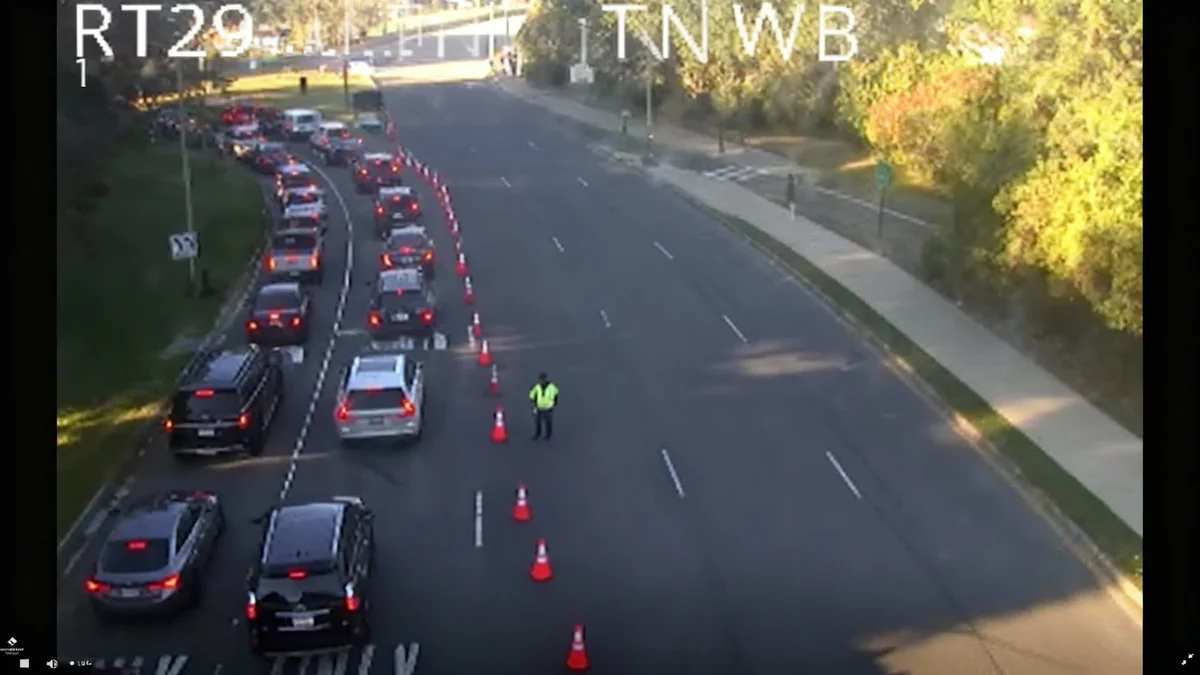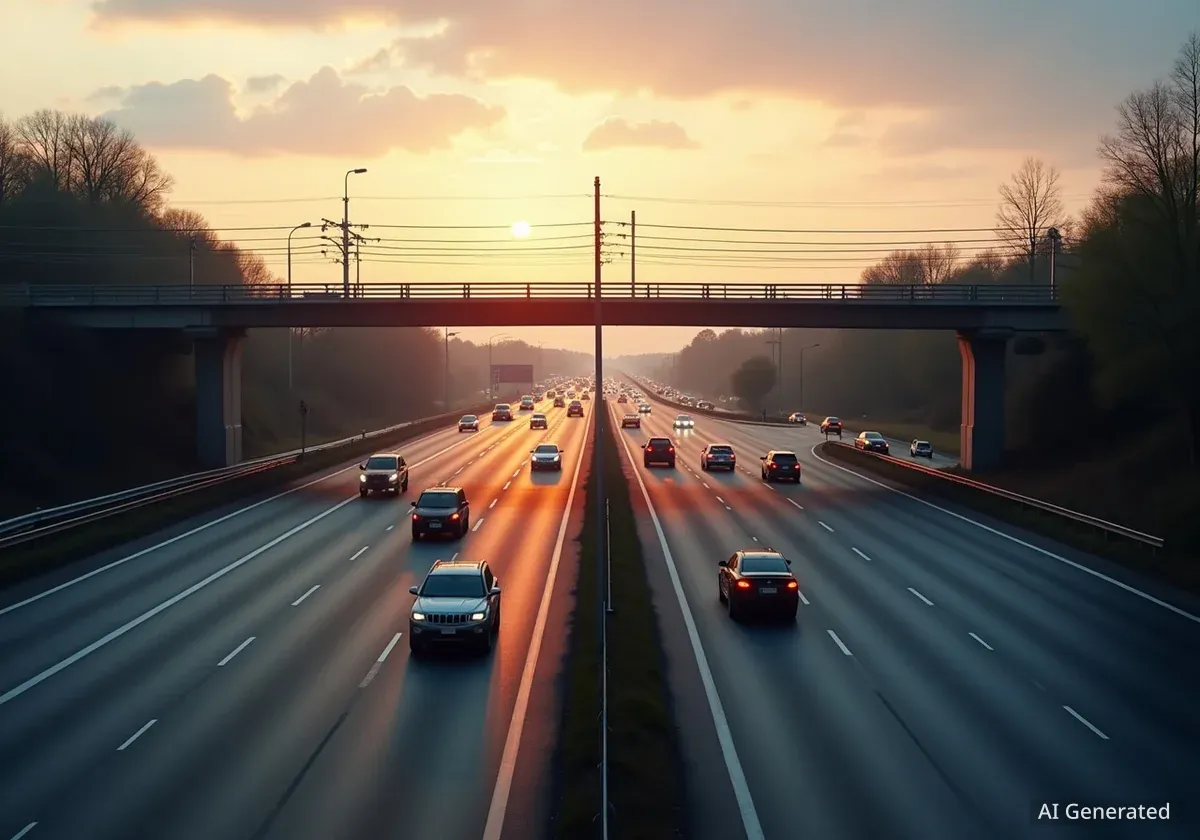The Francis Scott Key Bridge, a critical artery connecting Georgetown in Washington, D.C., with Rosslyn, Virginia, was fully reopened on Thursday evening after a multi-hour shutdown caused significant traffic disruptions. The closure, which began around 5 p.m., was initiated for a police operation, believed to be related to the movement of a dignitary through the area.
Key Takeaways
- Washington, D.C.'s Key Bridge was closed in both directions for several hours on Thursday, October 16.
- The shutdown, which started during the evening commute, was due to an unspecified police operation.
- Officials believe the closure was necessary to facilitate dignitary movement in the capital.
- The incident led to major traffic congestion throughout Georgetown and surrounding commuter routes.
- D.C. police later confirmed that all lanes on the bridge and affected local streets have been reopened.
Details of the Bridge Closure
Commuters traveling through the Georgetown area faced unexpected and lengthy delays on Thursday evening. The Metropolitan Area Transportation Operations Coordination (MATOC) issued the first alerts around 5 p.m., announcing a complete shutdown of the Key Bridge. The initial advisory stated that all lanes were closed "for an unknown duration" due to police activity.
The closure was not limited to the bridge itself. D.C. police were deployed to manage the situation, extending the blockades to nearby streets. Inbound lanes leading to the bridge and westbound M Street, a major commercial road running through Georgetown, were also blocked off. This created a ripple effect, causing gridlock on multiple secondary roads as drivers sought alternative routes.
The Role of MATOC
The Metropolitan Area Transportation Operations Coordination (MATOC) is a multi-agency program that coordinates transportation responses for planned events and unplanned incidents in the Washington, D.C. region. It brings together transportation and public safety agencies from D.C., Maryland, and Virginia to improve travel safety and reliability, especially during critical situations like the Key Bridge closure.
The timing of the shutdown coincided with the peak of the evening rush hour, amplifying its impact on thousands of drivers. For several hours, the official reason for the operation remained unclear, leading to speculation among those caught in the traffic.
Reason for the Shutdown
While officials did not release a specific minute-by-minute account of the operation, it is widely believed the closure was for dignitary movement. This is a common occurrence in the nation's capital, where the movement of high-level government officials, foreign leaders, or the presidential motorcade requires extensive security measures.
These operations often involve temporary, rolling, or complete shutdowns of major transportation routes to ensure a secure and unimpeded passage. The lack of a pre-announced schedule is typical for security reasons, which can lead to sudden and disruptive traffic impacts for the public.
Unrelated Incident on the Bridge
Adding to the complexity of the situation, reports also indicated a two-vehicle collision occurred on the bridge during the same timeframe. However, authorities have clarified that this collision was a separate incident and not the primary reason for the extended, full closure of the thoroughfare.
The D.C. Metropolitan Police Department managed the on-the-ground logistics of the closure, redirecting traffic and securing the perimeter. Their involvement is standard procedure for such security-sensitive operations within the District.
Impact on Commuters and Georgetown Traffic
The Key Bridge is one of the most important crossings over the Potomac River, carrying an estimated 62,000 vehicles per day, according to pre-pandemic traffic data. Its closure effectively severs a primary link between Northwest D.C. and Northern Virginia, forcing traffic onto already congested alternative routes like the Theodore Roosevelt Memorial Bridge and the Arlington Memorial Bridge.
The shutdown on Thursday created what many drivers described as a "traffic nightmare." The effects were most severe in Georgetown, known for its narrow streets and heavy pedestrian traffic, which quickly became overwhelmed with rerouted vehicles. Major arteries like M Street NW and Wisconsin Avenue NW experienced near-standstill conditions.
Social media platforms were filled with posts from frustrated commuters, some reporting being stuck in the same spot for over an hour. The incident highlights the vulnerability of the D.C. transportation network, where the closure of a single key piece of infrastructure can cause widespread and immediate disruption.
Resolution and Current Status
After several hours of disruption, the police operation concluded. Late on Thursday evening, the D.C. Police Department issued a statement confirming that all closures related to the incident had been lifted. Traffic flow was restored on the Key Bridge and in the surrounding Georgetown area.
While residual delays continued for a short period as the backlog of traffic cleared, the situation returned to normal later in the night. No injuries were reported in connection with the police operation or the unrelated vehicle collision on the bridge.
"All closures in the Georgetown area have been lifted," a spokesperson for the D.C. police confirmed in an update provided to local news outlets, signaling the end of the disruption for evening travelers.
The event serves as a reminder for residents and commuters in the capital region of how quickly and significantly security protocols can impact daily travel. Authorities recommend that drivers in the D.C. area stay informed through official channels like MATOC for real-time updates on road closures and traffic incidents.





